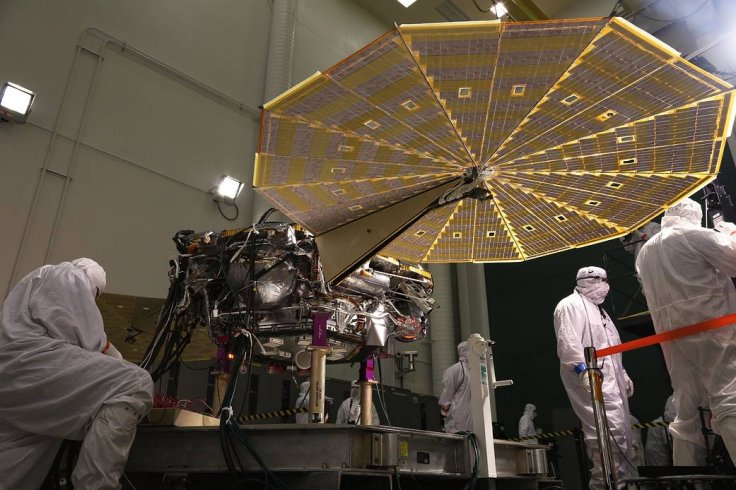
NASA's upcoming Mars mission Insight or Interior Exploration using Seismic Investigation, Geodesy and Heat Transport has successfully completed a key test mission to extend the solar arrays that will power the mission to the Red Planet.
The test was conducted on January 23 in a simulated room in Lockheed Martin Space center, in Colorado to evaluate the fully deployed solar arrays. Illumination test was also conducted along with this to confirm the quantity of power collected by the solar cells.
The solar panels were designed like a fan for maximum advantage in the poorly sunlit planet. The planet's distance from the Sun and its dusty and thin atmosphere results in weaker sunlight. The solar panels in the Insight can provide sufficient energy for the probe for at least one Martian year, or two Earth years, for studying the Red Planet's deep interior.
Scott Daniels, Lockheed Martin InSight Assembly, Test and Launch Operations (ATLO) Manager said, "This is the last time we will see the spacecraft in landed configuration before it arrives at the Red Planet. There are still many steps we have to take before launch, but this is a critical milestone before shipping to Vandenberg Air Force Base in California."
InSight will undergo intense studies on the "inner space" of Mars' crust, mantle, and core. It will also measure tectonic activities and meteorite impacts on the planet. This study could explain the early formation of rocky planets in the solar system including Mercury, Venus, Earth, and Mars along with other rocky exoplanets before 4 billion years.
The probe will listen to marsquakes using its seismometer and detect temperature using its heat probe. Researchers say that this is the first mission for an intense study similar to a health checkup in the planet which is about 4.5 billion years old.
The solar panel test was undertaken along with the addition of a microchip containing more than 1.6 million names to the probe. The microchip is inscribed with names submitted by the public. Another chip of 827,000 names was already glued into the InSight in 2015. A mission will carry around 2.4 million names to the Red Planet.
NASA JPL's Microdevices Laboratory has chipped the 400 nanometers wide names to the microchips of the vehicle.The Microdevice Laboratory had previously inscribed names and images to a number of spacecraft including Mars Spirit, Opportunity, and Curiosity rover.
The mission will be sent in May 2018 and is expected to land on the Martian soil by November 2018.









